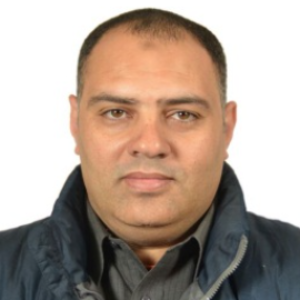Title : Functionalization, modification and development of some polymeric membranes producing an advanced variety membranes with selective and distinct specifications can be applicable in desalination
Abstract:
Approximately 97% of all water on Earth is saline water, found primarily in oceans and seas. The remaining 3% is freshwater. Of this freshwater, a significant portion is locked up in glaciers, ice caps, and underground, leaving a much smaller percentage readily available for human use. At the same time the concurrent growth in population and industrial development has led to a drastic increase in the demand for fresh water. The demand for clean water is increasing due to the rapid increase in urbanization, and in economic and industrial development. Water treatment companies are therefore turning to seawater as the major source from which freshwater is produced. Seawater can be treated using many physical, biological, and chemical methods. On a general note, the choice of any of these methods depends on many factors which include cost of treatment, nature of chemicals, space for installation, and possible generation of secondary pollution. For these reasons, membrane technology is being adopted for certain stages of water treatment processes. The commonly used types of membrane technology in seawater treatment are microfiltration, ultrafiltration, nanofiltration, and reverse osmosis (RO). All these membrane processes can be used either independently or combined as hybrid systems. The choice of any of these membranes will depend on the type of impurities that need to be removed from the wastewater. These membrane techniques can substantially reduce the energy consumption of water treatment, reduce waste formulation, and make the treatment more cost-effective, safer, and sustainable. Out of all the membrane desalination technologies, RO is the most popular and this technology has the highest number of plants. RO has different sources of feed water ranging from seawater, to brackish, river and wastewater. Membranes can be organic (polymeric) or inorganic (ceramic or metallic), according to its composition, and their morphology is dependent on the nature of the material. There is a need for improved membranes that have higher efficiency and are more resistant to the chemical environment, especially chlorine. At present the demand of membrane technology in the field of gas separation (GS), medicine, waste water treatment, production of drinking water by desalination, and other methods is increasing day by day. The use of synthetic materials in biomedical applications has increased dramatically during the past few decades. Surface properties of polymers are of fundamental importance in many branches of industrial applications (e.g., separation of gasses, liquid mixtures, desalination, coating, adhesion, etc.). Performances of membranes also depend on the properties of their surfaces, since membrane may be considered as one of the surface phenomena. Hence, it is very natural that much attention has been paid to the membrane surface modification. Many of the surface modifications were done to improve the selectivity and permeability. Plasma treatment, grafting reaction, etc., were applied for this purpose. In this presentation showing some polymeric membranes modifying and developing techniques, and also its applications and results in water desalination.


